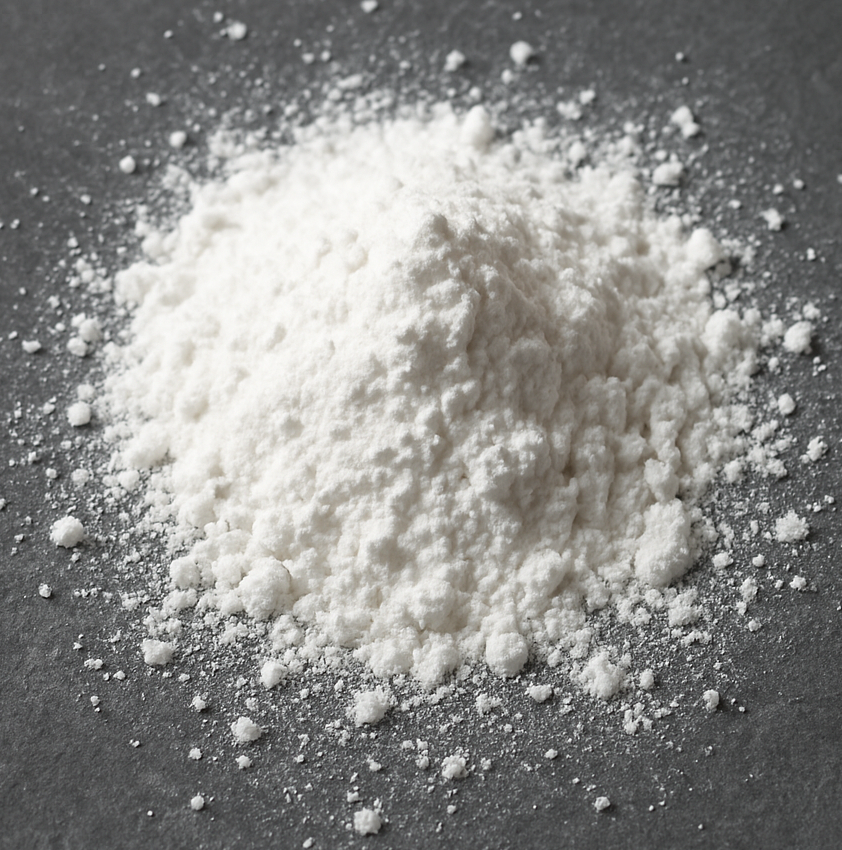Zinc triflate (Zn(OTf)₂), a strong Lewis acid catalyst, has garnered significant attention in organic synthesis, polymer polymerization, and asymmetric catalysis due to its high catalytic activity, excellent thermal stability, and broad substrate compatibility. However, its industrial application faces challenges such as high costs, difficulties in recycling, and sensitivity to reaction conditions. This article systematically explores optimization strategies for Zn(OTf)₂ from four perspectives
—synthetic process optimization, catalytic performance modulation, recycling technologies, and green chemistry applications—while providing insights into future developments.
I. Synthetic Process Optimization: Cost Reduction and Purity Enhancement
Traditional synthesis methods for Zn(OTf)₂ (e.g., the reaction of ZnO with triflic acid) suffer from low yields and byproduct formation. Recent advancements focus on the following strategies:
1. Solvent and Reaction Condition Optimization
Solvent Selection: Replacing aqueous media with acetonitrile or dichloromethane minimizes Zn(OH)₂ byproduct formation.
Temperature Control: Gradual heating (0°C → room temperature → 60°C) prevents localized overheating and decomposition.
Yield Improvement: In situ generation of triflic acid (e.g., via CF₃SO₃H and ZnCO₃ reaction) achieves yields exceeding 95% (J. Org. Chem. 2021).
2. Green Synthesis Pathways
Microwave-Assisted Synthesis: Reduces reaction time to 30 minutes and energy consumption by 40% under microwave irradiation.
Solid-State Reaction: Utilizes ZnO and solid CF₃SO₃H, eliminating solvents and aligning with green chemistry principles.
II. Catalytic Performance Modulation: Adapting to Diverse Reaction Systems
The catalytic activity of Zn(OTf)₂ is highly influenced by coordination environment, solvent polarity, and additives. Key optimization approaches include:
1. Coordination Environment Design
Ligand Addition: Weakly coordinating ligands (e.g., tetrahydrofuran or crown ethers) enhance Zn²⁺ exposure, boosting catalytic activity.
Case Study: In Friedel-Crafts alkylation, adding 15% crown ether increases reaction rates by 3-fold.
2. Solvent Effects and Additives
Polar Solvent Optimization: Nitromethane > acetonitrile > dichloromethane (ideal for high-polarity Diels-Alder reactions).
Proton Acid Synergy: Incorporating trace HOTf (0.5 mol%) accelerates proton transfer steps (e.g., in ketone allylation).
3. Immobilization Techniques
Porous Material Support: Loading Zn(OTf)₂ onto MCM-41 or MOFs improves dispersion and reduces catalyst usage (TON up to 1200).
Ionic Liquid Encapsulation: Combines homogeneous catalysis with heterogeneous recycling using [Bmim]PF₆ as a medium.
III. Recycling and Reuse: Addressing Industrial Challenges
High costs drive the development of recycling technologies for Zn(OTf)₂:
1. Liquid-Liquid Extraction
Fluorinated Solvents (e.g., perfluorohexane) selectively extract Zn(OTf)₂ with >85% recovery.
2. Membrane Separation
Acid-resistant nanofiltration membranes (e.g., polyimide) retain catalysts in continuous-flow systems.
3. Low-Temperature Crystallization
Cooling (-20°C) induces Zn(OTf)₂ crystallization from reaction solutions (purity >99%).
IV. Green Chemistry and Emerging Applications
1. Biomass Conversion
Cellulose Hydrolysis: Zn(OTf)₂/H₂O systems convert cellulose to glucose at 120°C (92% yield).
2. Asymmetric Catalysis
Chiral Induction: Combining with chiral bisphosphine ligands (e.g., BINAP) achieves >90% ee in olefin epoxidation.
3. Photocatalytic Synergy
Zn(OTf)₂/Photosensitizer: Visible-light-driven C-H bond activation reduces energy consumption (Angew. Chem. 2023).
V. Challenges and Future Perspectives
Cost Control: Exploring low-cost zinc sources (e.g., industrial zinc waste) to replace high-purity ZnO.
Stability Enhancement: Designing hydrolysis-resistant coordination structures for aqueous systems.
AI-Driven Optimization: Machine learning for predicting optimal reaction conditions and ligand combinations.
Conclusion
Through innovations in synthesis, precision catalytic system design, and green recycling technologies, the industrial potential of Zn(OTf)
₂
will expand. Interdisciplinary integration (e.g., flow chemistry, computational modeling) promises breakthroughs in pharmaceuticals, energy materials, and beyond.
Looking for High-Quality Lewis Acids?
If you need reliable Lewis Acids suppliers or want to explore safer alternatives, contact us today for expert guidance and high-quality chemical solutions. UIVCHEM ( Yurui (shanghai) chemical Co.,Ltd )are a professional and experienced supplier of Lewis Acids,we look forward to your inquiries.





